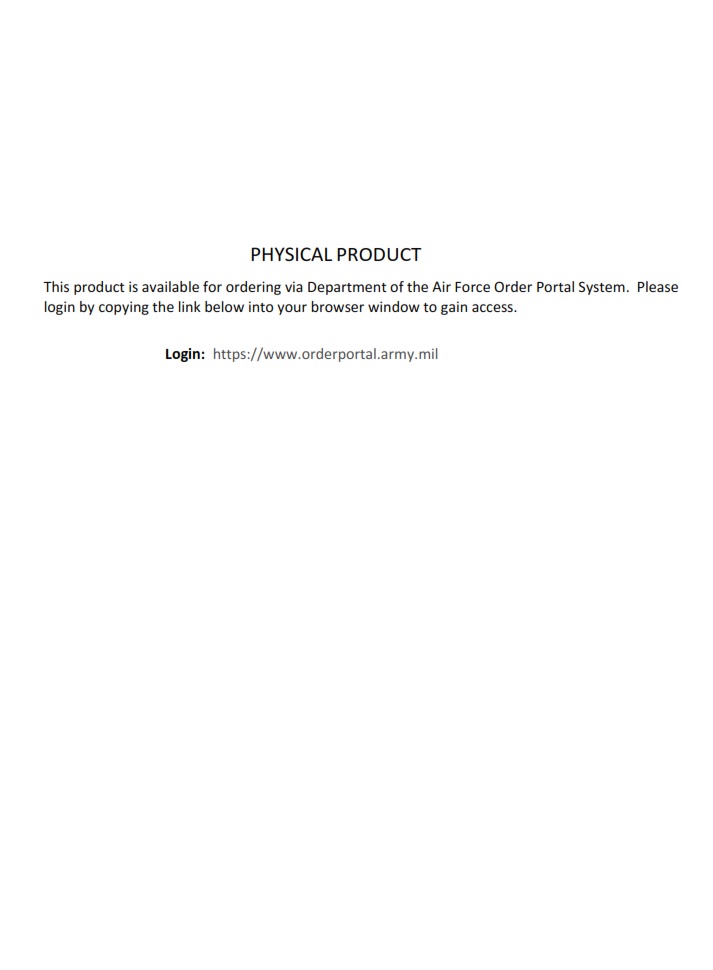AF-FORMS.COM – AF Form 2206 – Program Layout Format – As the heartbeat of military operations, precision and organization is paramount in ensuring mission success. Enter AF Form 2206 – Program Layout Format, a document that serves as the blueprint for efficiency in planning and executing Air Force programs. While its name may sound mundane to some, within its structured layout lies the power to streamline complex processes and streamline communication across diverse teams. Imagine a document that acts as a conductor orchestrating various moving parts of a project seamlessly, guiding personnel towards a common goal with clarity and conciseness. From intricate timelines to detailed task assignments, AF Form 2206 stands as a silent but powerful force driving operational excellence within the Air Force ecosystem. Let’s delve into the intricacies of this form and unravel how it transforms chaos into cohesion within military operations.
Download AF Form 2206 – Program Layout Format
| Form Number | AF Form 2206 |
| Form Title | Program Layout Format |
| Edition Date | 6/1/1987 |
| File Size | 278 KB |
AF-Form-2206-Program-Layout-Format.pdf (36 downloads )
What is an AF Form 2206?
The AF Form 2206, also known as the Program Layout Format, serves as a crucial tool within the United States Air Force for organizing, detailing, and providing essential information about various programs or initiatives. This form follows a structured layout that enables clear communication and effective documentation of key program elements such as objectives, timelines, resources required, and roles and responsibilities. By utilizing the AF Form 2206, personnel are able to streamline the planning process and ensure alignment with organizational goals.
One of the distinguishing features of the AF Form 2206 is its user-friendly design that facilitates easy navigation and comprehension for individuals at all levels within the Air Force. This standardized format enhances consistency in program management practices across different units and locations. Furthermore, by requiring specific information to be filled out in designated sections, the form promotes thoroughness and attention to detail when developing or reviewing programs. Overall, the AF Form 2206 plays a vital role in promoting efficiency and accountability in military operations through its structured approach to program layout and documentation.
Where Can I Find an AF Form 2206?
If you’re in search of an AF Form 2206, look no further than the official Air Force e-Publishing website. This digital platform serves as a central repository for all Air Force forms, making it easy to locate and download the specific form you need. Additionally, many base libraries have physical copies of commonly used forms like the AF Form 2206 for personnel to access.
For those who prefer convenience and efficiency, utilizing online resources such as virtual document repositories or specialized websites that cater to military forms can also be a valuable option. These platforms often provide search functions and organized categories to help users quickly locate and download the required form without hassle. By leveraging digital tools, individuals can streamline their administrative processes and focus more on their operational duties within the Air Force.
AF Form 2206 – Program Layout Format
When it comes to organizing information effectively, the AF Form 2206 Program Layout Format serves as a valuable tool for ensuring clarity and coherence in presenting data. This standardized format provides a systematic way to arrange different program elements, making it easier for users to navigate and understand the content. By structuring information in a logical sequence, the form helps streamline communication and enhance the overall user experience.
One key aspect of the AF Form 2206 is its flexibility in accommodating various types of programs and content layouts. Whether it’s a training module, briefing slides, or project plan, this format can be adapted to suit different purposes while maintaining consistency and professionalism. Additionally, by outlining specific sections such as objectives, procedures, and evaluation criteria, the form helps creators stay organized and focused on delivering comprehensive program details without missing crucial components.
